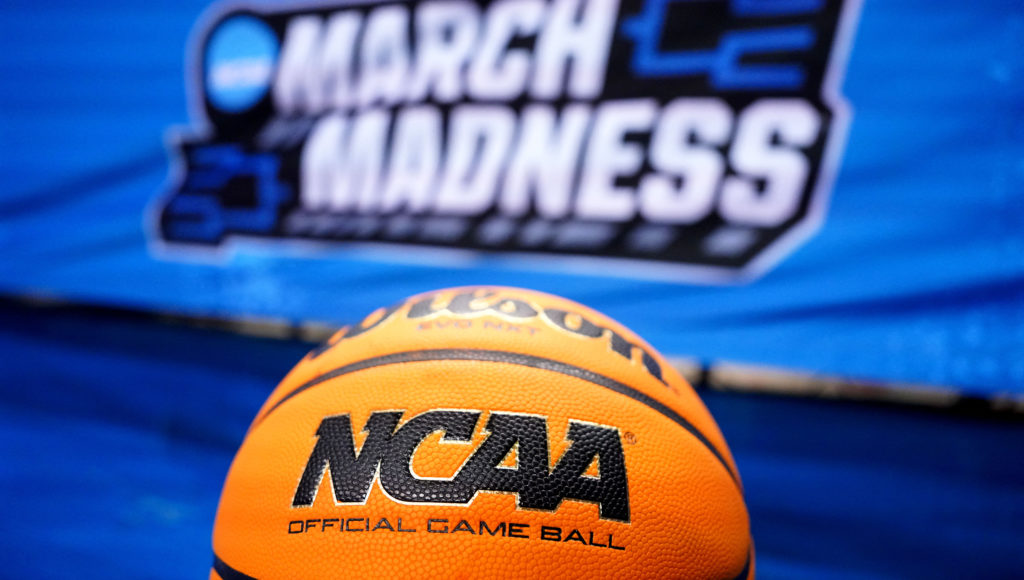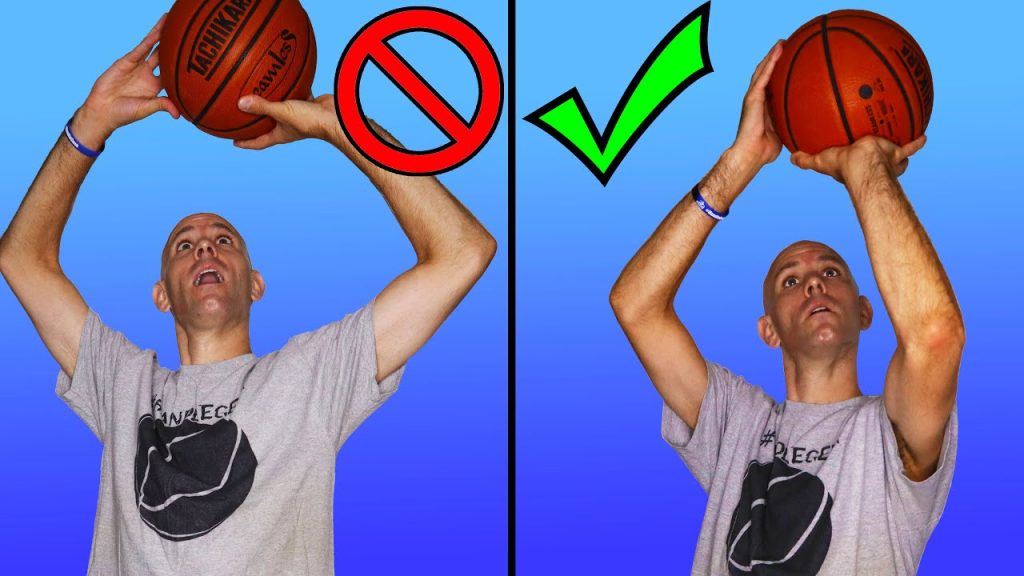The first basketball cost $1.50 to make. That might surprise you.
Today, basketballs cost much more. Basketball has a rich history. It all started with a simple idea. Dr. James Naismith invented the game in 1891. He needed a ball for his new sport. The first basketball was just a soccer ball.
Later, a special ball was made for the game. The cost? Only $1. 50. This small expense laid the foundation for a global sport. Basketball grew quickly. Now, it’s a billion-dollar industry. But it all began with that first, affordable ball. Curious about how this small investment turned into a major sport? Read on. Discover the fascinating journey from that first ball to today’s high-tech versions.

Credit: www.dailytarheel.com
The Birth Of Basketball
Basketball is one of the most popular sports worldwide today. But how did it all begin? The story dates back to the late 19th century. The birth of basketball involved creativity and innovation. It all started with a simple idea and a minimal budget. Let’s dive into the origins and the vision behind this beloved sport.
Origins And Inception
In December 1891, Dr. James Naismith invented basketball. He was a physical education instructor at the International YMCA Training School in Springfield, Massachusetts. Tasked with creating a new indoor game, Naismith sought to keep his students active during the winter months. He needed a game that was easy to understand, yet engaging.
Naismith wrote down 13 basic rules for the new game. He used a soccer ball and a peach basket as the first “goals.” The first game ever played consisted of nine players on each side. The objective was to throw the ball into the opposing team’s peach basket. This simple start would eventually lead to the modern game we know today.
James Naismith’s Vision
Naismith’s vision for basketball was clear and purposeful. He wanted a game that promoted physical fitness, skill, and teamwork. Naismith aimed to create a sport that minimized physical contact to reduce injuries. This principle set basketball apart from other sports of that era.
The first game was played on a budget of just a few dollars. The peach baskets and soccer ball were inexpensive. Yet, the impact was enormous. Naismith’s vision extended beyond just a game; he saw the potential for a sport that could unite people. His rules emphasized fair play and sportsmanship.
Naismith’s contributions to basketball have left a lasting legacy. His vision and effort laid the foundation for a sport that millions enjoy today. From a simple peach basket to a global phenomenon, the journey of basketball is a testament to innovation and foresight.
Early Equipment And Costs
The first basketball cost around $1. 50 to make. Early equipment was basic, using peach baskets and soccer balls. This low-cost setup made the sport accessible to many.
In the early days of basketball, equipment was basic and the costs were minimal. The sport’s inventor, Dr. James Naismith, created the game using everyday items. Understanding the initial expenses and early basketball design gives insight into the humble beginnings of this popular sport.Initial Expenses
Dr. Naismith used a soccer ball for the first basketball games. The cost of a soccer ball then was around $1.50. To provide a goal, he used peach baskets, which cost around $0.50 each. The total initial expense for equipment was about $2.50. This low cost made basketball accessible. Schools and community centers could easily afford to set up the game. The affordability played a key role in the sport’s rapid spread.Early Basketball Design
The first basketballs were just soccer balls. They were not perfect for the game. The balls were hard to dribble. Players found it difficult to control them. Naismith soon realized the need for a better design. In the 1890s, the first basketballs were made. They were made of leather with a rubber bladder inside. These balls cost around $3.00 each. The new design improved the game. Players could dribble and shoot more easily. The simplicity and low cost of early equipment helped basketball grow. Schools and communities embraced the sport quickly. The early design changes made the game more enjoyable. This laid the foundation for basketball’s global popularity.Materials Used
The first basketballs were made using a variety of materials. These materials made the balls durable and suitable for the game. Let’s look at some key materials used in the making of the first basketballs.
Leather And Stitching
Early basketballs were made from leather. This material was chosen for its durability and flexibility. The leather was often sourced from cowhide. Skilled workers stitched the leather panels together by hand. This labor-intensive process ensured the ball was sturdy. The stitching also added to the ball’s overall strength. The hand-stitched seams helped maintain the ball’s shape during play.
Inflation Mechanism
The inflation mechanism was another crucial component. Early basketballs used rubber bladders for inflation. These bladders were placed inside the leather panels. The rubber bladders allowed the ball to bounce correctly. Players used hand pumps to inflate the ball. The inflation mechanism ensured the ball had the right pressure and bounce. Proper inflation was key to the ball’s performance on the court.
Manufacturing Process
The creation of the first basketball involved intricate craftsmanship and a significant investment of labor and time. This section will delve into the detailed steps and techniques used in the manufacturing process.
Craftsmanship Techniques
The first basketballs were made using hand-stitching techniques. Skilled craftsmen would manually sew the panels together, ensuring a tight and durable bond. The material used was typically genuine leather, chosen for its durability and grip.
Every panel was cut precisely to fit, with eight panels forming a spherical shape. The bladder, an inner rubber component, was inserted to hold air and provide the ball’s bounce. This bladder was also carefully crafted to maintain the ball’s shape and pressure.
Labor And Time Investment
Creating a single basketball required a significant amount of labor. On average, it took about three to four hours to hand-stitch one ball. Skilled workers were essential to ensure the quality and consistency of each ball.
The process included several stages:
- Cutting the leather panels
- Stitching the panels together
- Inserting and securing the bladder
- Final inspection and testing
Each stage demanded precision and attention to detail. Any errors could compromise the ball’s performance and durability.
The cost of labor was a significant factor in the overall expense of manufacturing the first basketball. Given the manual nature of the work, wages for skilled craftsmen added up. This labor-intensive process contributed to the initial high cost of producing basketballs.
In summary, the manufacturing process of the first basketball combined traditional craftsmanship with substantial labor and time investment, resulting in a high-quality sports equipment that laid the foundation for modern basketballs.
Economic Context Of The Era
The creation of the first basketball took place in a unique economic period. This era influenced the cost and availability of materials. Understanding this context helps us appreciate the impact on sports equipment.
Economic Conditions
During the late 19th century, the economy was recovering from the Industrial Revolution. Production costs were decreasing due to advancements in manufacturing. This allowed for mass production of goods at lower prices.
Workers earned modest wages, which affected spending on recreational items. Families prioritized essentials, leaving limited funds for sports equipment. Factories focused on producing goods that were in high demand.
The cost of raw materials fluctuated due to economic instability. Leather, a key material for the first basketball, was not cheap. This directly impacted the production cost of the basketball.
Impact On Sports Equipment
The economic conditions shaped the sports equipment market. Manufacturers aimed to create affordable products to attract buyers. They used available materials to keep costs down.
Basketballs were initially handmade, requiring skilled labor. This increased the production cost. Limited technology meant longer production times, adding to expenses.
Table of cost breakdown for the first basketball:
| Component | Cost |
|---|---|
| Leather | $2.00 |
| Bladder | $0.50 |
| Labor | $1.50 |
| Total | $4.00 |
This table shows the estimated cost of making the first basketball. Despite the economic challenges, basketball quickly gained popularity. The sport’s growth led to increased demand and production efficiency over time.
Comparative Costs
Understanding the comparative costs of basketball production is fascinating. The first basketball had different costs than today’s basketballs. Let’s explore how these costs have changed over time.
Modern Basketball Production
Today, modern basketball production involves advanced materials and technology. Manufacturers use synthetic leather, rubber, and other durable materials. These materials ensure the basketballs last longer and perform better.
- Production Cost: $6 – $10 per ball
- Retail Price: $20 – $100 per ball
Modern production also involves automated machinery. This speeds up the process and reduces labor costs. But the initial investment in technology is high.
Cost Differences Over Time
The first basketball was made in the late 1800s. It was made from leather and a rubber bladder. The cost was higher due to manual labor and the materials used.
Here’s a simple comparison of the costs:
| Time Period | Material Cost | Labor Cost | Total Cost |
|---|---|---|---|
| Late 1800s | $1.50 | $2.00 | $3.50 |
| Modern Day | $4.00 | $2.00 | $6.00 |
As you can see, the cost of materials has increased. But the labor cost has remained fairly consistent. Modern technology has helped keep labor costs down.
Understanding these cost differences gives us insight into the evolution of basketball production. It highlights the impact of technology and material advancements.
Evolution Of Basketball Manufacturing
The journey of basketball manufacturing has transformed over time. From its humble beginnings to advanced technology today, the process has evolved significantly. Understanding this evolution helps appreciate the value and effort behind each basketball.
Technological Advances
Initially, basketballs were made from stitched leather panels. These panels were stitched by hand, making the process labor-intensive. Over time, technology improved and automated the stitching process. This made production faster and more consistent.
Another significant advance was the introduction of synthetic materials. These materials replaced leather, which was costly and less durable. Synthetic basketballs are lighter, more durable, and offer better grip. Technology also brought air retention improvements. Modern basketballs have high-quality bladders, which maintain air pressure longer.
Today, manufacturing involves computer-aided design and precision machinery. This ensures every basketball meets exact standards. 3D printing is another innovation, providing prototypes quickly and cheaply. These technological advances have made basketballs better and cheaper to produce.
Changes In Production Costs
In the early days, production costs were high due to manual labor. Skilled workers were needed to stitch the leather panels. The cost of high-quality leather was also significant. As technology improved, production costs decreased.
Automated machinery reduced the need for skilled labor. This lowered labor costs significantly. The switch to synthetic materials also reduced costs. Synthetic materials are cheaper and easier to produce than leather.
Today, basketball manufacturing is more efficient. Bulk production and global supply chains have further reduced costs. Modern materials and technology have made basketballs affordable for everyone.
| Era | Material | Production Method | Cost |
|---|---|---|---|
| Early 1900s | Leather | Hand-stitched | High |
| Mid 1900s | Leather/Synthetic | Machine-stitched | Medium |
| Modern Day | Synthetic | Automated | Low |
The evolution of basketball manufacturing shows how technology and materials have improved. These changes have made basketballs more accessible and high-quality for players worldwide.

Credit: www.nj.com
Legacy Of The First Basketball
The first basketball holds a special place in sports history. It represents the birth of a game enjoyed by millions worldwide. Understanding its legacy provides insight into the evolution of basketball.
Historical Significance
The first basketball was crafted in the late 19th century. It was made from leather with a rubber bladder inside. This design was innovative for its time. It set the standard for future basketballs. The cost to make it was modest, reflecting the materials used and the era’s technology.
Dr. James Naismith, the inventor of basketball, used this ball in the first games. These early games were played in gymnasiums with peach baskets as goals. The original basketball was crucial in shaping the rules and style of play. It helped transform a simple idea into a structured sport.
Influence On Modern Basketball
The first basketball’s design influenced modern basketballs. Today’s basketballs are made with advanced materials and techniques. Yet, the core elements remain similar. The size, weight, and bounce characteristics have roots in the first basketball.
Modern basketballs are more durable and consistent. They offer better grip and control. These advancements enhance player performance. But the legacy of the first basketball is evident in every dribble and shot.
Understanding the first basketball’s creation helps appreciate the sport’s history. It highlights the journey from a simple game to a global phenomenon. The first basketball’s legacy lives on in every game played today.
/cdn.vox-cdn.com/uploads/chorus_image/image/43059924/20140305_hcs_sy4_006.0.jpg)
Credit: www.libertyballers.com
Frequently Asked Questions
How Much Did The First Basketball Cost?
The first basketball cost around $3. 50. This was back in the late 19th century.
Who Invented The First Basketball?
The first basketball was invented by James Naismith. He created it in 1891.
What Materials Were Used For The First Basketball?
The first basketball was made from leather. It had a rubber bladder inside.
Why Was The First Basketball Created?
The first basketball was created for a new indoor game. James Naismith invented it to keep his students active.
Conclusion
Creating the first basketball involved minimal costs. Materials were simple and accessible. The sport’s humble beginnings reflect its growth and popularity today. Knowing its history adds appreciation for the game. This small financial investment led to a globally loved sport.
Basketball continues to inspire and unite people worldwide. Explore more about its fascinating journey and evolution.


